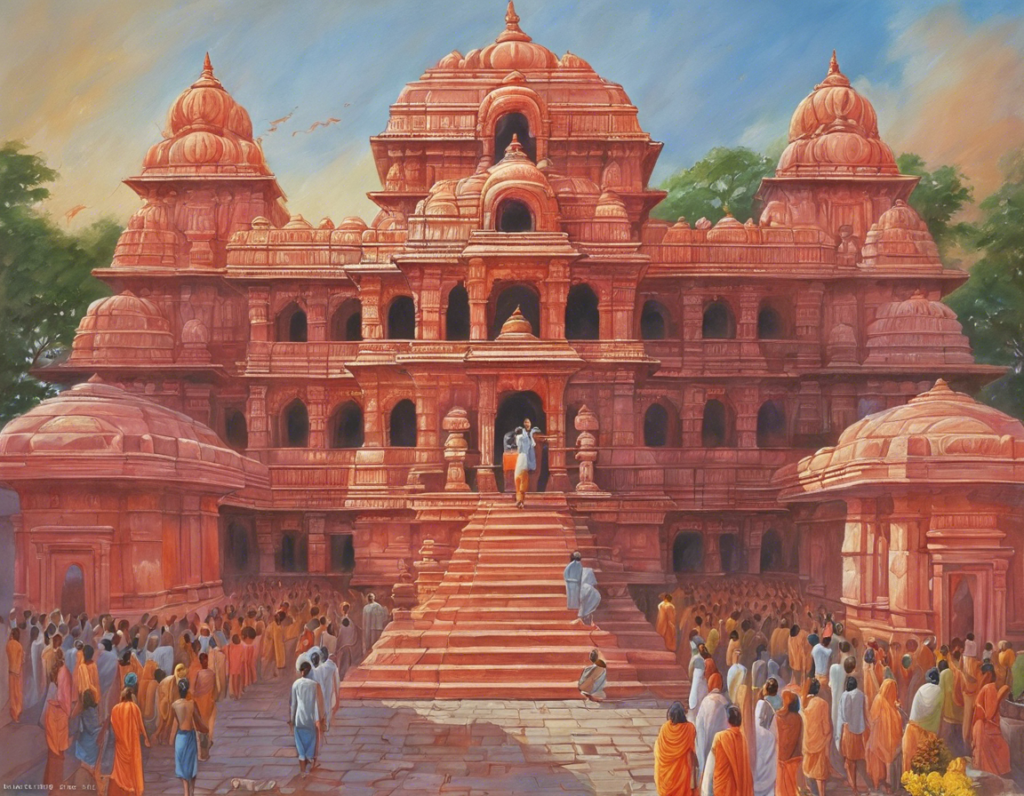The Ram Mandir Pran Pratishtha ceremony is a significant event that marks the establishment of divine presence within the Ram Mandir. The ceremony is a sacred ritual that involves invoking the divine energy and consecrating the temple. The Pran Pratishtha ceremony holds immense importance in the Hindu faith and is a momentous occasion for devotees.
Importance of the Pran Pratishtha Ceremony
The Pran Pratishtha ceremony is believed to infuse the deity into the temple’s idol, thereby making it sacred and alive. It is during this ceremony that the deity is invited to reside in the temple, and devotees believe that their prayers and offerings reach the divine presence through the consecrated idol. The consecration is performed by qualified priests who conduct various rituals to invite and establish the divine energy within the temple.
Schedule of the Pran Pratishtha Ceremony
The schedule of the Pran Pratishtha ceremony can vary depending on various factors such as the temple’s tradition, the deity being consecrated, and the astrological alignment. However, a general outline of the ceremony may include the following steps:
-
Purification Rituals: Before the ceremony begins, the temple premise is cleaned, and various purification rituals are performed to cleanse the space of any negative energies.
-
Kalash Sthapana: The ceremony typically starts with the establishment of Kalash (a copper pot filled with sacred water) symbolizing the presence of the deity.
-
Chanting of Mantras: Priests chant Vedic mantras to invoke the divine presence and seek blessings for the successful completion of the ceremony.
-
Havan: A sacred fire ceremony known as Havan is conducted where offerings are made to the fire along with the chanting of mantras. The fire symbolizes the divine presence and acts as a medium to convey prayers to the deity.
-
Abhishek: The idol of the deity is bathed with various sacred substances such as milk, honey, ghee, and water, symbolizing purification and sanctification.
-
Prana Pratishtha: The main ritual of the ceremony, where the priests infuse the idol with divine energy and invite the deity to reside within it. This involves chanting of specific mantras and offering prayers.
-
Aarti: Finally, the ceremony culminates with the offering of Aarti to the deity, accompanied by devotional songs and prayers.
Significance of the Pran Pratishtha Ceremony
The Pran Pratishtha ceremony is a deeply spiritual event that signifies the establishment of a direct connection between the devotee and the divine. It is believed that the consecrated idol becomes a living embodiment of the deity, and devotees can establish a personal relationship with the divine through worship and offerings. The ceremony is also seen as a way to invite peace, prosperity, and blessings into the lives of the devotees and the community at large.
Frequently Asked Questions (FAQs)
- What is the significance of the Pran Pratishtha ceremony?
-
The Pran Pratishtha ceremony is significant as it marks the infusion of divine energy into the temple’s idol, making it a sacred and living representation of the deity.
-
Who performs the Pran Pratishtha ceremony?
-
Qualified priests who are well-versed in Vedic rituals and mantras typically perform the Pran Pratishtha ceremony.
-
How long does the Pran Pratishtha ceremony usually last?
-
The duration of the ceremony can vary, but it typically lasts several hours, depending on the rituals and customs followed by the temple.
-
Can devotees participate in the Pran Pratishtha ceremony?
-
Devotees may not actively participate in the Pran Pratishtha ceremony itself, but they can witness the rituals, offer prayers, and seek blessings during the ceremony.
-
Is the Pran Pratishtha ceremony performed only for specific deities?
-
The Pran Pratishtha ceremony can be performed for various deities in Hinduism, depending on the temple’s tradition and the preferences of the devotees.
-
What is the role of astrology in determining the date of the Pran Pratishtha ceremony?
-
Astrology plays a significant role in determining auspicious dates and times for conducting the Pran Pratishtha ceremony to ensure the alignment of cosmic energies for a successful consecration.
-
How does the Pran Pratishtha ceremony differ from consecration ceremonies in other religions?
-
The Pran Pratishtha ceremony in Hinduism involves specific rituals and mantras to invite the deity’s presence into the idol, which is a unique feature of consecration ceremonies in Hindu temples.
-
Can non-Hindus participate in or witness the Pran Pratishtha ceremony?
-
While the Pran Pratishtha ceremony is a Hindu ritual, non-Hindus are generally welcome to witness the ceremony with respect and reverence for the traditions and beliefs of the devotees.
-
What preparations are made before the Pran Pratishtha ceremony?
-
Before the Pran Pratishtha ceremony, the temple premises are cleaned and purified, and arrangements are made for the rituals, offerings, and participation of priests and devotees.
-
How often is the Pran Pratishtha ceremony conducted in a temple?
- The Pran Pratishtha ceremony is typically conducted when a new idol is installed in the temple or when renovations are done to the existing idol, and it is believed to be necessary to renew the divine presence.
In conclusion, the Pran Pratishtha ceremony is a sacred and elaborate ritual that signifies the awakening of the divine presence in the temple. The ceremony embodies the essence of devotion, spirituality, and ancient traditions, making it a deeply significant event for devotees and the community.
